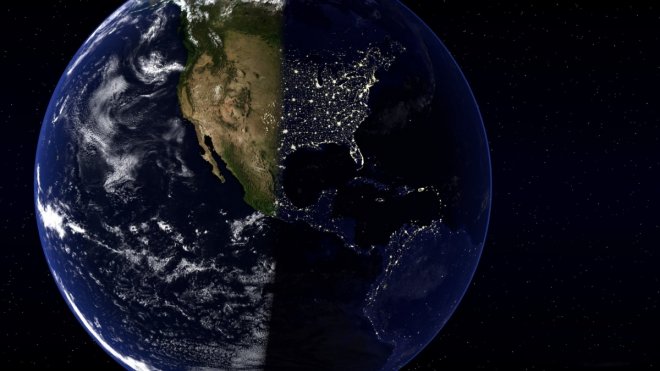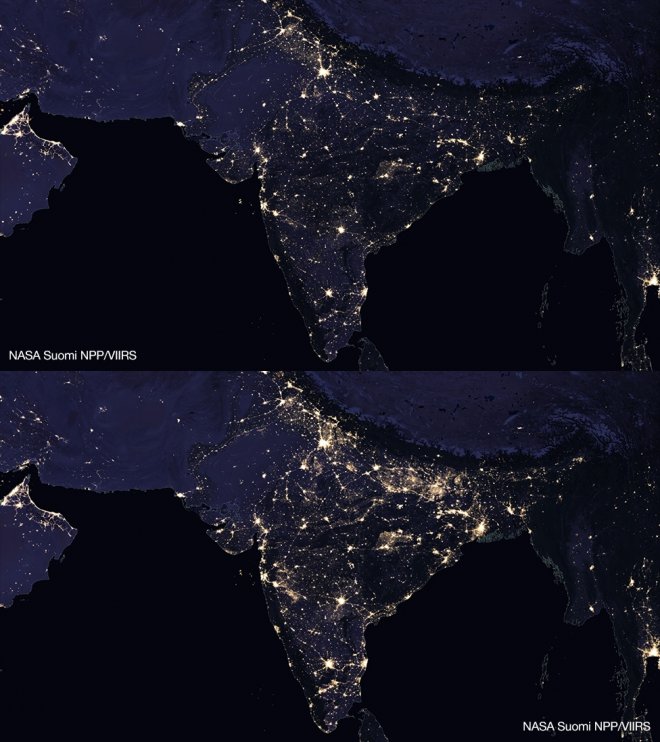According to a recent study, published in scientific journal Science Advances, we are losing the distinction between the days and nights. This dangerous and rapid shift will bring profound and long-term consequences on the health of humans and also the nature, warned the study authors.

According to the paper, titled Artificially lit surface of Earth at night increasing in radiance and extent, the amount of artificially illuminated regions have grown by 2.2% within the time period between 2012 and 2016. Christopher Kyba, a researcher from the German Research Centre for Geosciences and his team examined the high-resolution pictures taken by a NASA satellite radiometer, a device specially engineered to evaluate the brightness of light during night-time on Earth.
Places on our planet that are already illuminated have become even brighter and this luminosity growth rate has been 2.2% a year, found out the study.
"We're losing more and more of the night on a planetary scale," said the editor of the journal, Kip Hodges, to The Washington Post.
One of the images that Kyba used in the study shows how much the nigh-time lighting has changed between these four years. As per the images, most of the increase occurred around the Middle East and Asian region, while some "brightest nations" of the world, like Spain and America, stayed more-or-less same.

"Earth's night is getting brighter," said Kyba to the publication.
"In the near term, it appears that artificial light emission into the environment will continue to increase, further eroding Earth's remaining land area that experiences natural day-night light cycles," concluded the paper.
These findings, however, still do not show the true growth of night-time light and light intensity in the already illuminated regions, as the satellites, which has been used for the study, aren't sensitive in case of LED lights' blue light wavelengths.
During the last couple of years, the world has witnessed a vigorous embracing of highly competent LED lights, as they use much lesser electricity compared to the conventional incandescent lights. Add to that an LED light lasts for 10-20 times longer period of time than the incandescent lights, which makes it more cost-effective.
Also Read: Beer on Mars? Budweiser is working on it
LED lights may be cheap but we are actually paying high prices for using it. It brings along various problems for the humans. The short-wavelength of the blue light, which most of the LEDs emit, causes sleep deficiencies and several other health hazards. Last year, even the American Medical Association circulated warnings, which stated severe health problems caused by this kind of lights.
"In the longer term, perhaps the demand for dark skies and unlit bedrooms will begin to outweigh the demand for light in wealthy countries," wrote Kyba and his colleagues in the paper.









